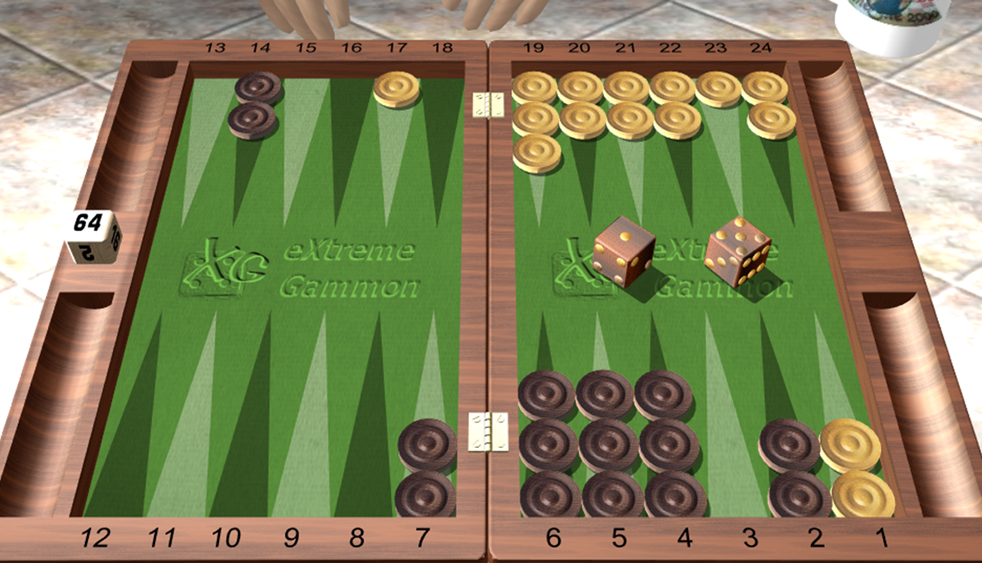Black is leading Yellow 2-0/5 and has a 5-1 to play
Black is in a very strong position to win the game with additional prospects to win a gammon. A gammon win is very significant as it could be the difference between leading 3-0 or being in the Crawford game with a 4-0 advantage. Black has nearly a free option to play on for the gammon with very little risk of losing the game. This is due to the fact that the cube is centered and still accessible to black, and yellow would be in error to accept it under most scenarios. As such, black correctly decided to play on for a roll rather than cashing the game for a 3-0 lead. When 5-1 fell out of the cup, black suddenly created a small opening for yellow. Two candidates immediately come to mind.
- 14/9,14/13: This play leaves black vulnerable to a dangerous 6-2 shot from yellow but positions the checkers nicely to complete the prime.
- 14/8: Again, this leaves a dangerous (5-2) indirect shot for yellow but creates another builder for the 3-point.
An extreme gammon analysis shows the two plays to be very close with black winning approximately 86% of the games and picking up an important gammon more than 11% of the time. So which play is best? Well, it turns out neither one is correct!
A third choice, 7/2,7/6 has the advantage of not leaving any blots but only wins the game 78% of the time and picks up slightly fewer gammons. With clearly inferior game winning (and gammon) prospects how could this play be superior to the other two choices? The surprising answer lies in the position of the doubling cube.
Because black retains access to the cube it is actually correct to make a safer play that is more likely to result in a double/pass at the next opportunity. Had black been able avoid leaving shots while keeping the bar point on the last roll it would have made sense to play on for the gammon. This problem reveals an enchanting paradox in backgammon whereby cube access can sometimes support a weaker play if the game does not have to be played to conclusion.

Frank is a two-time winner of the Backgammon World Championship in Monte Carlo and current holder of the title. He is a strategic consultant for professional sports teams, and within the sports betting and gaming industries. His work in decision science, critical thinking and sports analytics has been featured in many major news media outlets including ESPN, NFL Network, the New York Times, Fox Sports, Esquire, the Ringer and Showtime. He proudly serves as the co-director of the San Diego Backgammon Club. Learn more: https://frankfrigo.com/


I Honestly don’t know why the cube has not been offered in this position. Nonetheless, the only play that makes sense in my humble opinion, is 14/9, 14/13 which adds a builder to Black’s prime structure so he can make the 3 point on his next shake.